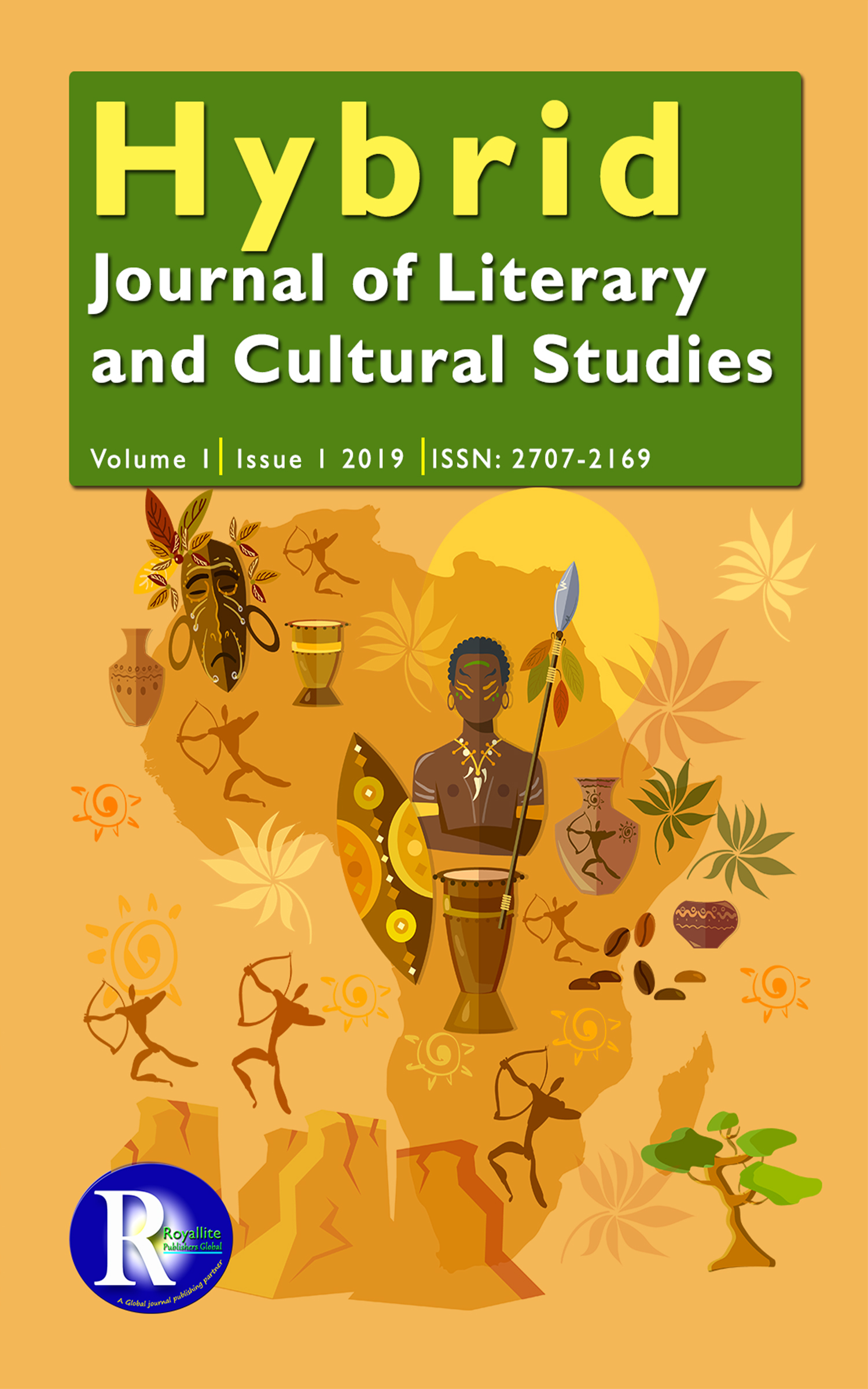Reframing romantic consciousness in John Donne and D. H. Lawrence’s perception of the woman in metaphysical and modern poetry
Main Article Content
Abstract
This paper examines the place of the woman in Romantic thought with focus on the poetry of John Donne and D. H. Lawrence. Given that Donne and Lawrence are not “Romantic” poets in the real sense of the word but have written Romantic poems, the paper focuses on how their attitude towards the woman is Romantic in nature. Though from the Renaissance and the Modern periods respectively, their poetry articulates the rich quality of human sensibilities with the woman at the centre of this artistic experience. The reframing of Romantic consciousness in Donne and Lawrence’s poetry manifests in the poets’ conceited diction as opposed to the Romanticists’ whose imagination priced the aesthetic experience and the sublimity of untamed nature in all its ramification. Wit, conceit, syllogisms, passionate intensity, and absurd deviances are the poets’ conscious attempt in the search for unity of being. Comparative representations of the woman are drawn from the works of key Romantic figures like William Wordsworth, Lord Byron, and John Keats. The Romantic theory and Ecofeminism guide the analyses, and the discussions reveal their sensibilities towards the woman. It further unfolds how both poets’ quest for ethereal values permit them to advocate peace and spiritual growth in societies where man is regularly disconnected from his/her spiritual essence.
Downloads
Article Details

This work is licensed under a Creative Commons Attribution-NonCommercial-ShareAlike 4.0 International License.
This open-access article is distributed under a Creative Commons Attribution (CC-BY-NC-SA) license.
You are free to: Share — copy and redistribute the material in any medium or format. Adapt — remix, transform, and build upon the material for any purpose, even commercially. The licensor cannot revoke these freedoms as long as you follow the license terms.
Under the following terms: Attribution — You must give appropriate credit, provide a link to the license, and indicate if changes were made. You may do so in any reasonable manner, but not in any way that suggests the licensor endorses you or your use.
No additional restrictions: You may not apply legal terms or technological measures that legally restrict others from doing anything the license permits.
How to Cite
References
Abercrombie, L. (1963) Romanticism. New York: Barnes and Noble.
Burke, L. M. (1947). The Reputation of John Donne in the Twentieth Century Master’s Theses. Paper 80. 30 June, 2022. Retrieved from https://ecommons.luc.edu/luc_theses/80
Conger, D. (2022). Wordsworth’s women: Female Creative power in Lyrical ballads. Retrieved from http://www.mtsn.org.uk/staff/staffpages/cer/wordsworth/creativity_the_femininehtm
Frayne, A. (2017). Birthing and Mining in John Donne’s ‘To His Mistress Going to Bed’. Advances in Literary Study, 5, 57-83. https://doi.org/10.4236/als.2017.54006
Gardner, H. (1967). The Metaphysical Poets. London: Oxford University Press.
Gray, R. et al. (2011). Inventions of the Imagination: Romanticism and Beyond. Washington: University of Washington Press.
Gottlieb, R. S. (1996). This Sacred Earth: Religion, Nature, Environment. New York: Routledge.
Gill, S. (1988). Ed. William Wordsworth’s Preface to Lyrical Ballads. New York: Oxford University Press.
Gottlieb, R. S. (1996). This Sacred Earth: Religion, Nature, Environment. New York: Routledge.
Janik, D. I. (1983). D.H Lawrence and Environmental Conciousness. Environmental Review: ER, 7(4).
Keats, J. (1884). Poetical Works. London: Macmillan.
Kristeva, J. (1986). “Staba Mater” Trans.Leon S. Roudiez. The Kristeva Reader .ed. Toril Moi. Columbia: Columbia University Press.
Kusi, D. T. (2010). Formative Yearnings in Nature: Critical Precepts in the Reading of William Wordsworthand S. T. Coleridge. Bhatter College Journal of Multidisciplinary Studies, 1(1), 9-19.
Majerhold, K. (2022). History of Love. The Internet Encyclopedia of Philosophy. Retrieved from https://iep.utm.edu/
Plumwood, V. (1993). Feminism and the Mastery over Nature. Chicago: Routledge.
Powell, K. (2022). Romantic Feminism. Romantic Politics. Retrieved from https://web.utk.edu/~gerard/romanticpolitics/feminism.html
Paglia, C. (1990). Sexual Personae. New York: Vintage Books.
Richardson, A. (1988). Romanticism and the Colonization of the Feminine. Romanticism and Feminism. ed. Anne K. Mellor. Bloomington: Indiana University Press.
Ross, M. (1986). Naturalizing Gender: Women’s Place in Wordsworth’s Ideological Landscape. 53,2391-410.
Ramsay, M. P. (1958). Donne’s Relation to Philosophy. A Garland for John Donne: 1631-1931. Massachusetts: Peter Smith.
Rigby, K. (2000). Introducing Criticism at the Twenty-First Century. Edinburgh: Edinburgh University Press.
Singer, I. (1987). The Nature of Love: Courtly and Romantic. Chicago: University of Chicago Press.
Seager, J. (1993) Earth Follies: Feminism, Politics and the Environment. London: Earthscan.
Rehan, N. (2004). Rationalism and D. H. Lawrence: A 21st Century Perspective. Montana: Montana State University.
Shin’ichiro I. (2005). An Exploration of a New Poetic Expression beyond Dichotomy: An Analytical Approach to the Meta-poetic Features of the Poems of D. H. Lawrence. Florida : Boca Raton.
Wellek, R. (1994). The Concept of ‘Romanticism in Literary History. I. The Term ‘Romantic’ and its Derivatives. Comparative Literature, 1(1), 1- 23.
Warren, J. K. (2000). Ecological Feminist Philosophy, Ecofeminist Philosophy: A Western Perspective on What It Is and Why It Matters, Lanham, MD: Rowman & Littlefield. Retrieved from https://philpapers.org/rec/WAREPA-3
Williams, C. (1990). Outlines of Romantic Theology with which is reprinted Religion and. Love in Dante: The Theology of Romantic Love. Eds. Alice Mary Hadfield. Michigan: William B. Eerdmans Publishing Company.






